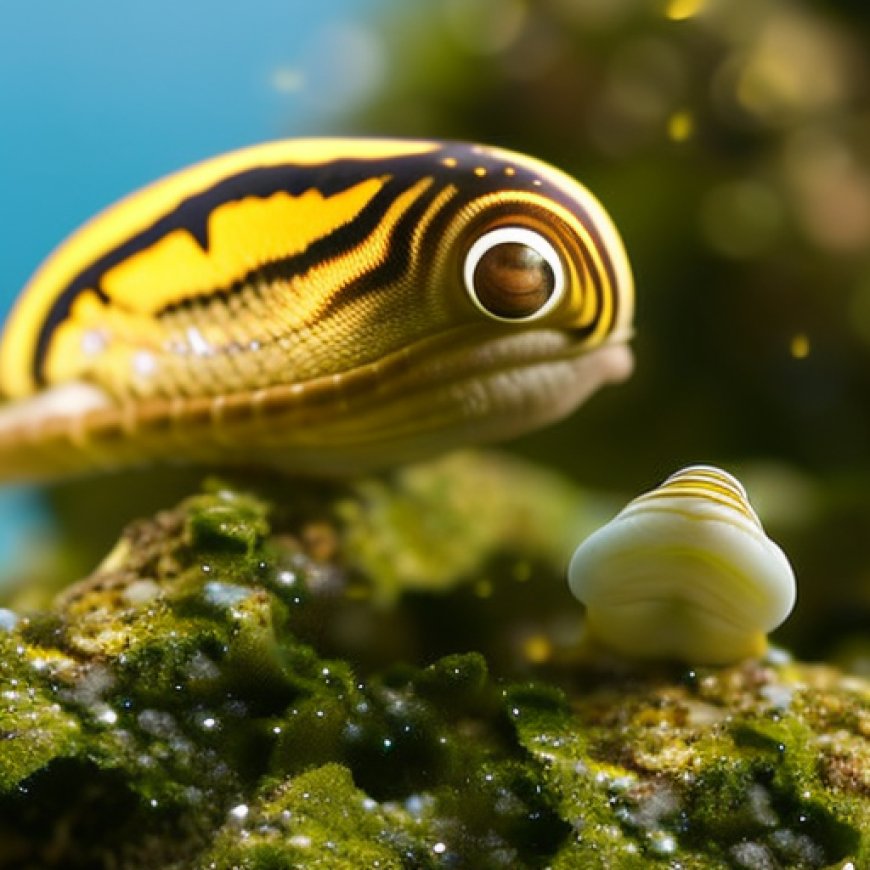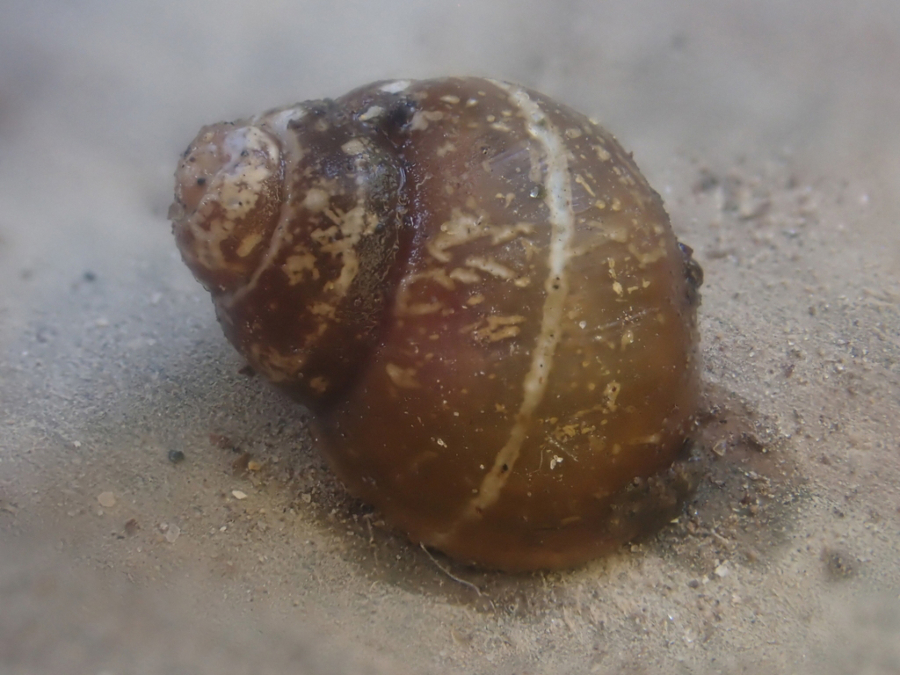Center for Biological Diversity hopes to protect Washington’s Ashy pebblesnail and shortface lanx
Center for Biological Diversity hopes to protect Washington's Ashy pebblesnail and shortface lanx The Columbian


Petition to Add Ashy Pebblesnail and Shortface Lanx to the Endangered Species List

Introduction
Once found throughout the Columbia River basin, the ashy pebblesnail and the shortface lanx have disappeared from much of Washington. The Center for Biological Diversity hopes to change that. The nonprofit group has petitioned the U.S. Fish and Wildlife Service to add both species to the federal endangered species list.
Importance of the Snails
While the snails may not be as popular or appealing as Washington’s other endangered species, such as the gray wolf, humpback whale or pygmy rabbit, they are “an important part of the web of life,” said Noah Greenwald, endangered species director for the center.
“They provide food for bigger organisms, like salmon and steelhead and other fish. All things are connected. If you remove them, then there’s going to be less fish for people,” Greenwald said in an interview Tuesday.
The snails also attach themselves to rocks and stream bottoms and eat algae and detritus from the rocks, which helps keep the streams and rivers clean.
Poor Treatment of Pacific Northwest Rivers
“These little snails speak volumes about how poorly we’ve treated our Pacific Northwest rivers, which desperately need stronger protections,” Greenwald said.
Ashy pebblesnails are small, tan or reddish snails with pale circles around their tentacled eyes. The shortface lanx is sometimes called the giant Columbia River limpet (even though it’s not actually a limpet) for its characteristic volcano-shaped cone.
Historically, both snail species were found throughout the Columbia River basin in Washington — including in Clark County — Oregon, Idaho, Montana, and British Columbia.
Current Habitat and Threats
Today, the ashy pebblesnail’s habitat has been reduced to the lower and middle Snake River basin in Idaho, the Grande Ronde River in Washington and Oregon, the Okanogan and Methow rivers in Washington, and the Hanford Reach of the Columbia River, also in Washington. It’s possible some specimens may still be found in the lower Columbia region, according to the Washington Department of Fish and Wildlife.
The shortface lanx is now found only in the Okanogan River and Hanford Reach with small populations found in the Methow and Grande Ronde rivers. Limited numbers can also be found in parts of Oregon and Idaho.
Both species require cold, well-oxygenated streams and rivers. They cannot survive in waters with mud or silt, extreme variations in water levels, an abundance of aquatic plants or algae or where dredging or mining occurs.
Both species are threatened by dams, agriculture, urbanization, logging, and other threats, according to the center. And as temperatures in rivers and streams increase due to climate change, Greenwald warned that available habitat for the snails will continue to decrease.
Endangered Species Act and Response
Under the Endangered Species Act, the Fish and Wildlife Service has one year to respond to the center’s petition. However, the center said the agency rarely meets this deadline and often requires a legal challenge before action is taken.
SDGs, Targets, and Indicators
-
SDG 14: Life Below Water
- Target 14.1: By 2025, prevent and significantly reduce marine pollution of all kinds, particularly from land-based activities, including marine debris and nutrient pollution.
- Indicator 14.1.1: Index of coastal eutrophication and floating plastic debris density.
-
SDG 15: Life on Land
- Target 15.1: By 2020, ensure the conservation, restoration, and sustainable use of terrestrial and inland freshwater ecosystems and their services, in particular forests, wetlands, mountains, and drylands, in line with obligations under international agreements.
- Indicator 15.1.1: Forest area as a proportion of total land area.
- Indicator 15.1.2: Proportion of important sites for terrestrial and freshwater biodiversity that are covered by protected areas, by ecosystem type.
Analysis
The issues highlighted in the article are connected to SDG 14: Life Below Water and SDG 15: Life on Land.
SDG 14: Life Below Water
The article discusses the ashy pebblesnail and the shortface lanx, which are both species found in rivers and streams. These species play a role in the food chain by providing food for fish like salmon and steelhead. If these snails are removed from the ecosystem, there will be a decrease in fish populations. This relates to SDG 14, which aims to prevent and reduce marine pollution and protect marine biodiversity.
SDG 15: Life on Land
The article mentions that the ashy pebblesnail and the shortface lanx require cold, well-oxygenated streams and rivers for their survival. They cannot survive in waters with mud or silt, extreme variations in water levels, an abundance of aquatic plants or algae, or where dredging or mining occurs. These snails are indicators of stream health, and their presence or absence can indicate the health of the ecosystem. The threats faced by these species, such as dams, agriculture, urbanization, logging, and climate change, are also relevant to SDG 15, which focuses on the conservation and sustainable use of terrestrial ecosystems.
Targets and Indicators
Based on the article’s content, the following targets and indicators can be identified:
-
Target 14.1: By 2025, prevent and significantly reduce marine pollution of all kinds, particularly from land-based activities, including marine debris and nutrient pollution.
- Indicator 14.1.1: Index of coastal eutrophication and floating plastic debris density.
-
Target 15.1: By 2020, ensure the conservation, restoration, and sustainable use of terrestrial and inland freshwater ecosystems and their services, in particular forests, wetlands, mountains, and drylands, in line with obligations under international agreements.
- Indicator 15.1.1: Forest area as a proportion of total land area.
- Indicator 15.1.2: Proportion of important sites for terrestrial and freshwater biodiversity that are covered by protected areas, by ecosystem type.
Table: SDGs, Targets, and Indicators
| SDGs | Targets | Indicators |
|---|---|---|
| SDG 14: Life Below Water | Target 14.1: By 2025, prevent and significantly reduce marine pollution of all kinds, particularly from land-based activities, including marine debris and nutrient pollution. | Indicator 14.1.1: Index of coastal eutrophication and floating plastic debris density. |
| SDG 15: Life on Land | Target 15.1: By 2020, ensure the conservation, restoration, and sustainable use of terrestrial and inland freshwater ecosystems and their services, in particular forests, wetlands, mountains, and drylands, in line with obligations under international agreements. | Indicator 15.1.1: Forest area as a proportion of total land area. |
| Indicator 15.1.2: Proportion of important sites for terrestrial and freshwater biodiversity that are covered by protected areas, by ecosystem type. |
Copyright: Dive into this article, curated with care by SDG Investors Inc. Our advanced AI technology searches through vast amounts of data to spotlight how we are all moving forward with the Sustainable Development Goals. While we own the rights to this content, we invite you to share it to help spread knowledge and spark action on the SDGs.
Fuente: columbian.com

Join us, as fellow seekers of change, on a transformative journey at https://sdgtalks.ai/welcome, where you can become a member and actively contribute to shaping a brighter future.







